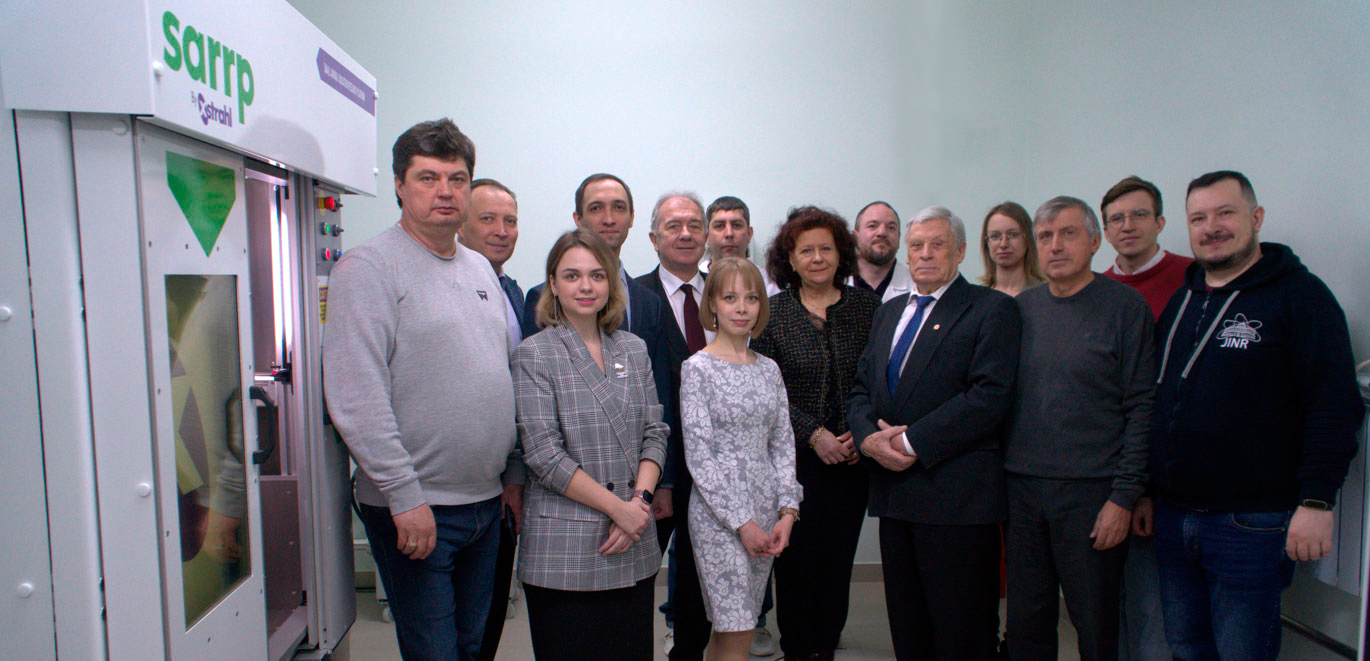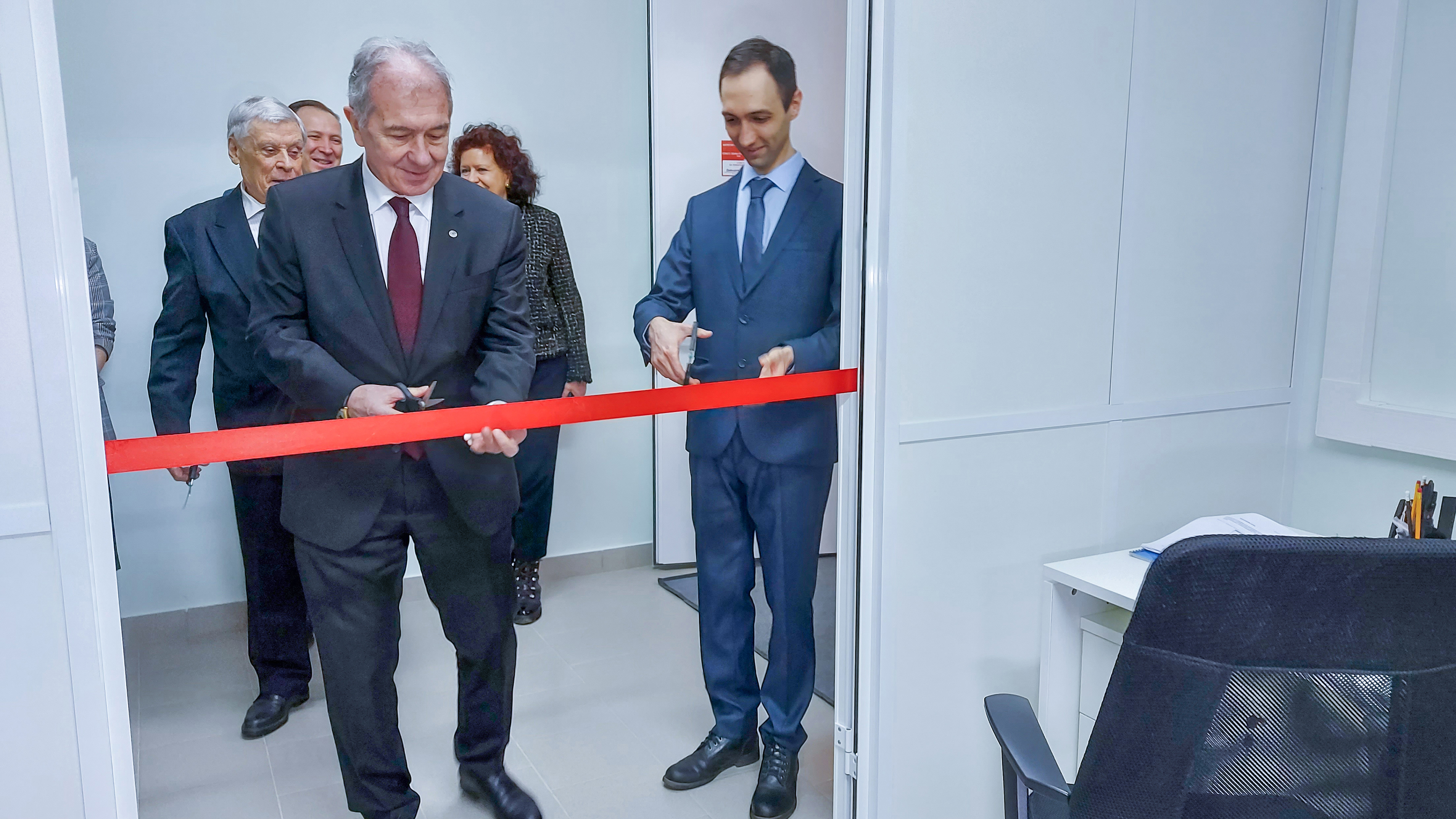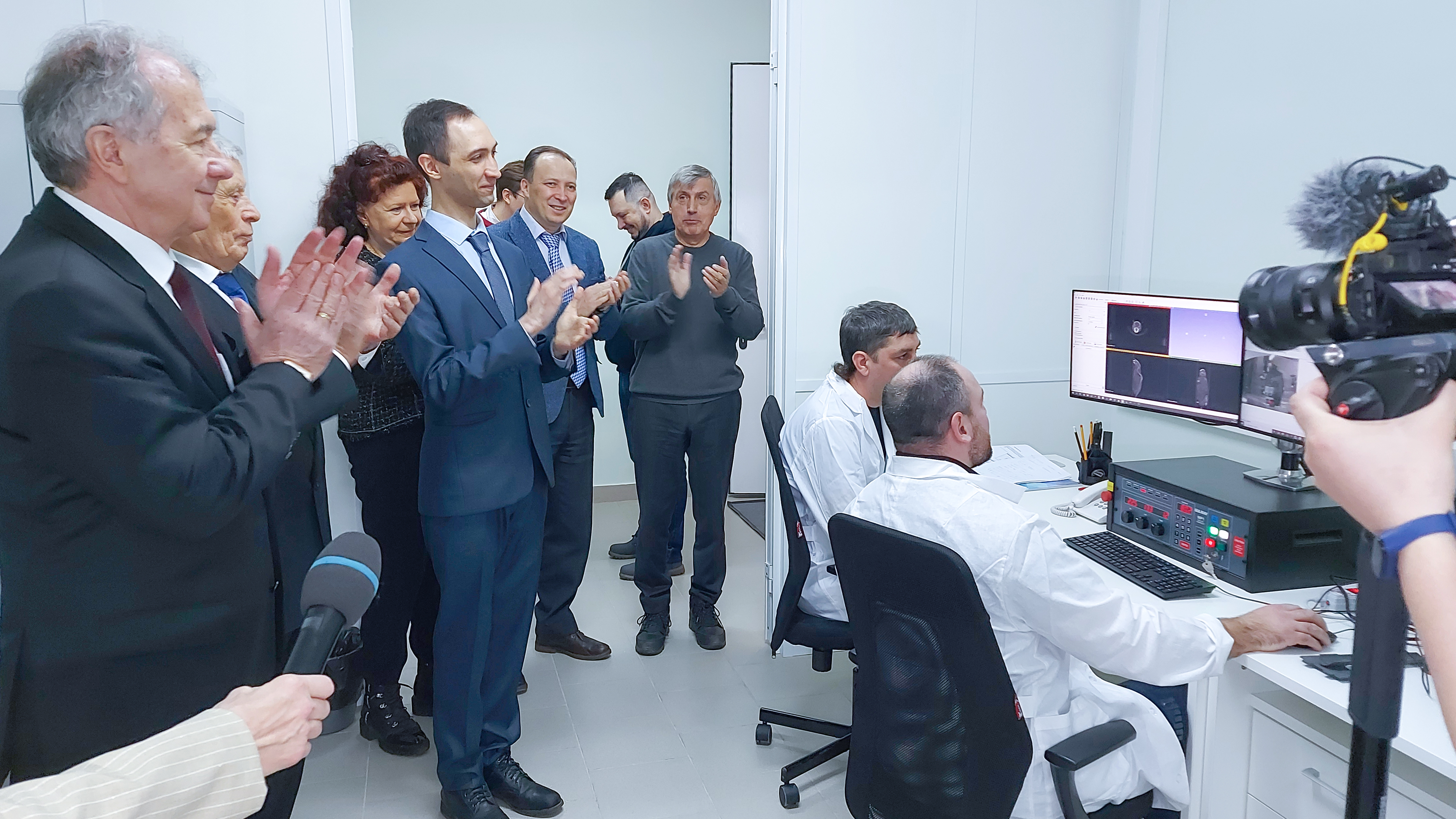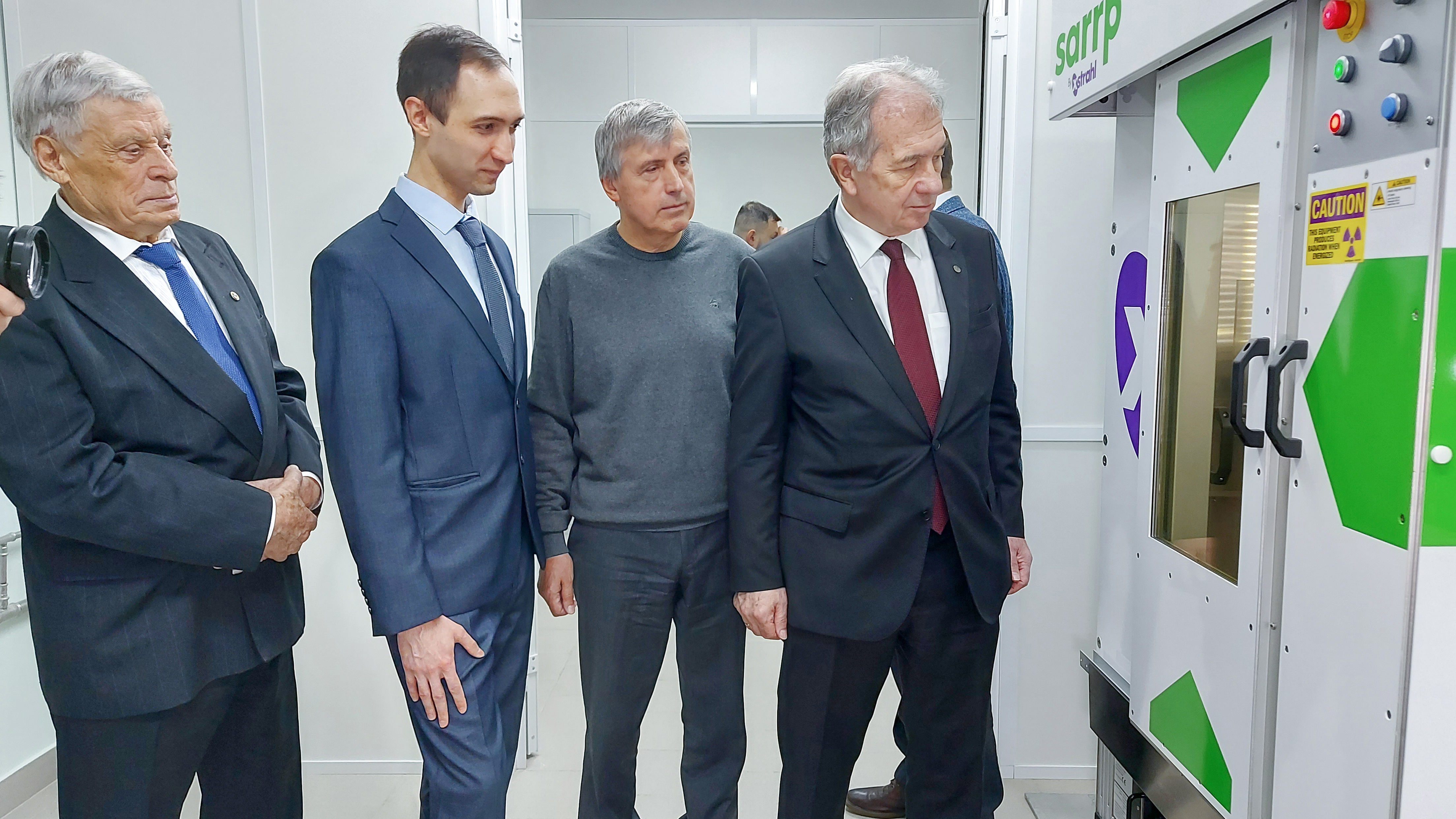New basic facility of LRB JINR: one of a kind in Eastern Europe
News, 25 March 2022
On 24 March 2022, the Laboratory of Radiation Biology JINR hosted the ceremonial commissioning of the SARRP (Small Animal Radiation Research Platform) X-ray irradiation facility manufactured by Xstrahl (Great Britain) and designed for radiobiological studies on small laboratory animals.
JINR Vice-Director Latchesar Kostov commented on the event on behalf of the Institute’s Directorate, “I am delighted to be present at this event – the opening of the LRB’s first basic facility. It will expand the research capabilities of the laboratory. We are still proud that LRB has the opportunity to use the entire research infrastructure of the Joint Institute: neutron sources, heavy ions of different energies, and gamma rays. We can call the new X-ray equipment the first basic facility of the Laboratory of Radiation Biology.”
“In terms of studying the radiobiological effects of irradiation for therapy purposes in various conditions, this facility opens up tremendous possibilities for us,” LRB Scientific Leader, RAS Corresponding Member Evgeny Aleksandrovich Krasavin noted.
It was the idea of LRB Director Aleksandr Bugay to purchase a rare and in many ways unique research complex. According to the scientist, there are, in total, a hundred of such facilities in the world, used by leading research and cancer centres around the world, mainly in the USA and China. However, this is the only SARRP system installed in the territory of Russia and Eastern Europe, and it will be the first facility of this scale and level in LRB JINR.
SARRP is a multifunctional instrumentation for the complete modelling of the radiation therapy cycle with the help of X-rays, which are used in most clinics of the world to treat oncology. The new facility is a unique device that allows not only irradiation, but also preparation for it, treatment planning with dose marking. It makes 3D computed tomography possible, with analysing it by slices. The device allows creating a radiation field of the required shape with a high accuracy and irradiating only the desired area of the animal’s body. Thanks to its design, SARRP enables a three-dimensional planning of tumour irradiation, as well as irradiation not only with a direct beam, but also with a so-called arch aiming at a specific organ without irradiating healthy tissues. In addition, it is possible to analyse the processes in real time and simulate irradiation, by adjusting the intensity, voltage, and collimation of the X-ray beam.
According to Aleksandr Bugay, the commissioning of such a powerful research tool will allow the Institute to contribute to the development of medical radiology. He explained that the facility would serve to solve two classes of research tasks. Firstly, SARRP will make it possible to have a combined effect of X-rays and certain medications within the framework of innovative research by LRB scientists on the improvement of radiotherapy effectiveness. Secondly, with the help of the facility, it will be possible to study neurodegenerative processes in the brain.
“Thus, we can contribute to the study of brain aging, as well as to the development of research on the mechanisms of neurodegenerative diseases. Such a unique complex will help us to significantly expand not only our fundamental knowledge about the effect of radiation on the body, but also will be useful for practical things, such as, first of all, the development of medical technologies,” Aleksandr Bugay concluded.
SARRP allows highly conformal photon irradiation from an X-ray tube with an adjustable voltage of 5–225 kV and current up to 30 mA of a given area of the animal’s body with an accuracy of 1 mm. Radiation planning is achieved through a built-in accurate dose control system and an X-ray tomography system.
The SARRP system commissioning will allow LRB scientists and the JINR Member States to conduct unique research in the fields of fundamental radiobiology, neuroradiobiology, and the development of new radiation therapy methods at a high technical level.



